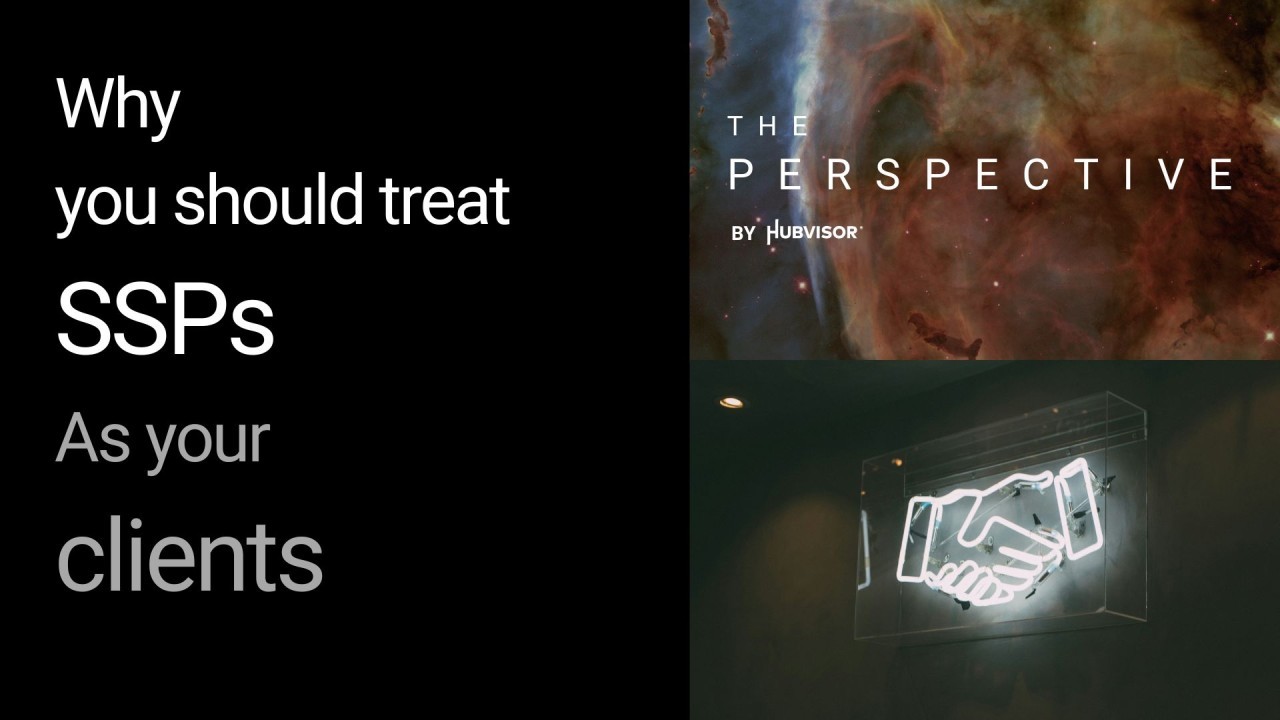You should treat SSPs as your clients.
mercredi 20 mars 2024

We believe a common misconception if you’re a Publisher is to behave as SSPs’ clients. While this is of course true in a sense, We're going to show you how shifting your mindset and treating a given SSP as your client can help you grow you business.
Because in the end, SSPs are buying your inventory every day. Some of them are probably your largest direct buyers. And an entity spending money for your product… can be considered a client.
Here are the 5 action items we're going to go through so you can start today to reach that mindset.
Active listening
QBRs
Teams
Experimentations
Reputation (communication + networking)
Active listening.
Most of you regularly meet advertisers and agencies and practice active listening. This means asking open questions, which are questions that cannot be answered by “yes” or “no”.
“Are you satisfied with our product?” is a closed question.
“What would satisfaction mean when using our product” is an open question.
By using open questions and letting your client talk, you taking the opportunity to get an information you wouldn’t have gotten otherwise. Here’s a few other examples:
“Which goals do you want to reach through our advertising offer?”
“What can we do or develop so that we can make our inventory better for you?”
“Which new experimentations would you like to try out next within our inventory?”
“Who should we meet within your organization in order to strengthen our relationships?”
“Which identity solutions would you recommend us using?”
“What are your clients’ strategies?”
And, by far our favorite which is so basic, but also so efficient: “How can I help you out?”
We can go on and on but the idea is to document all the questions you would frequently ask agencies and advertisers, and go through them with your SSPs the next time you meet with them. And actively listening to their answers, just like you would with a major advertiser.
By doing this, not only will you be able to build better products for them and help them grow within your inventory, but you’re also positioning your company as a unique partner that genuinely cares about what a given SSP need, which I don’t think enough publishers are doing.
We strongly advise to document their answers and share them with your team so that everyone knows what needs to be done.
2. QBRs.
Quarterly Business Reviews… This is another big thing you might do with agencies and advertisers. Proactively meeting with them, sharing key metrics and talk about what’s next for their clients, and your products. While some of them might be boring if nothing new is to be said, it’s oftentimes very useful so that your strategy is aligned with your clients’ needs.
Again, no surprise here, we strongly recommend doing the same with SSPs. Organise QBRs with your SSPs right now. They will be thrilled to know more about their results, your roadmap and get the opportunity to share their insights on your inventory.
On the long run, this can help your company become top of mind whenever SSPs have something new in stores, and that’s something we want to talk next.
3. Experimentations
If you work in ad tech, they’re part of your daily tasks. This industry is innovating at a very fast pace and catching up with all that’s happening can be overwhelming. But SSPs can be so helpful.
Make your inventory open to new experimentation, and let SSP know that they can use it as a sandbox for upcoming optimisations and products
The goal is to remain top of mind so you benefit from SSPs’ innovations first.
4. Teams
Once you’ve made it clear for SSPs that they you’re a special partner, you need to onboard your team.
It can start by inviting them to SSP QBRs, but broadly speaking just make it so they frequently meet with SSPs.
The information needs to go from SSPs to your team, so everyone within your organization are fully aware of the features they allow them to use, and from your team to your SSPs, so they are always on track with your team’s goals and priorities.
5. Reputation
We’re in a small industry, oftentimes led by word of mouth. Getting along well with SSPs and helping them out can greatly help you grow your brand reputation and even your own career.
By treating SSPs as your clients, your are growing :
your brand employment attractiveness.
Your cross-industry reputation and recognition
Press release you can build together with SSPs
The snowball effect that your overall organisation can benefit from
As a sum-up, treating SSPs as your clients is something your can start today.
By listening to them, frequently meeting with them, making your inventory available for experimentation and letting your team know that this is a priority for your strategy, you will considerably grow your reputation and develop the attractiveness of your brand within a small, word-of-mouth let industry.
Subscribe to our LinkedIn newsletter here.
Contact Hello@hubvisor.io or visit Hubvisor.io !
Get in touch with us today.


37 Rue de Caumartin
75009 Paris

